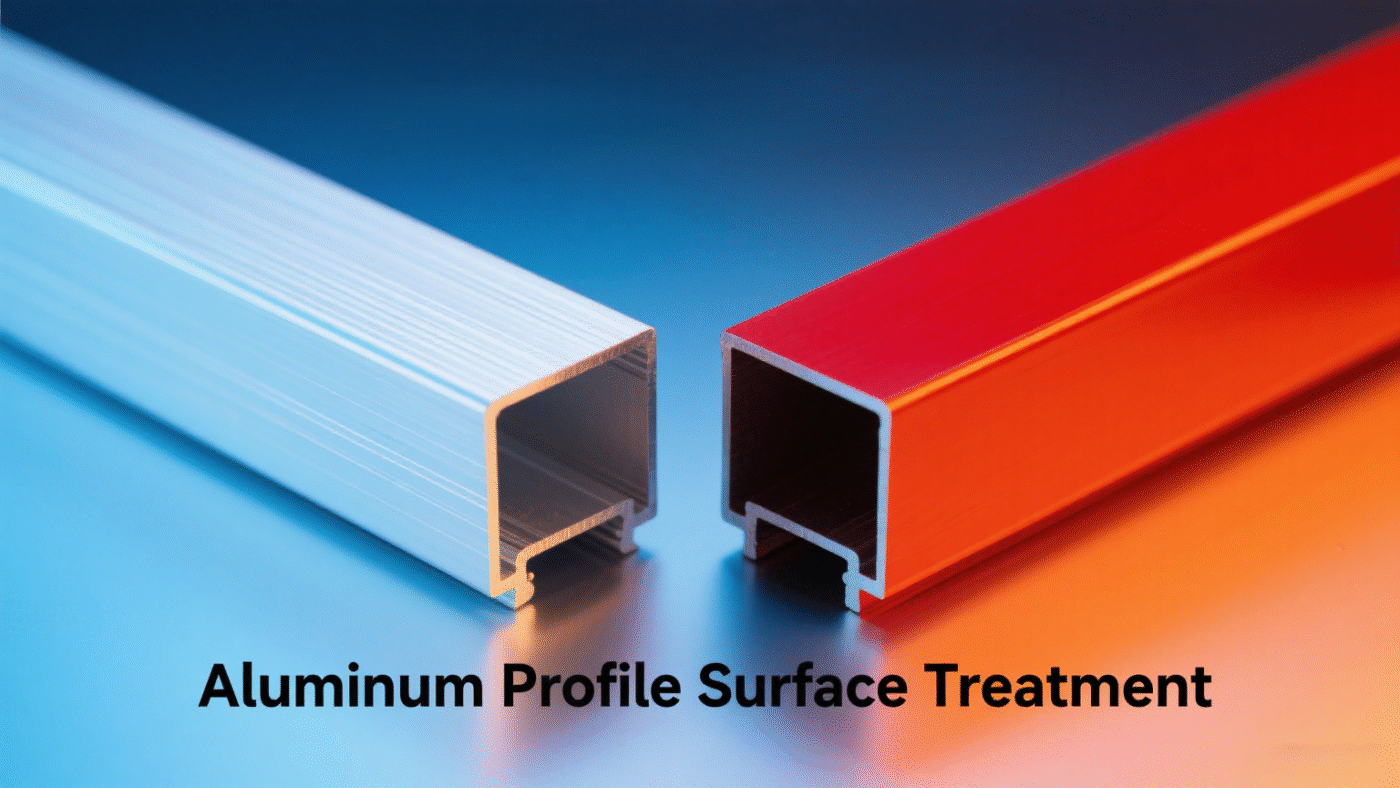Aluminum Profile Surface Treatment: Anodizing vs. Powder Coating – Which Process to Choose?
Aluminum profiles are widely used in construction, automotive, and electronics due to their lightweight, corrosion resistance, and ease of processing. However, untreated aluminum profiles are prone to oxidation, discoloration, and wear. Surface treatment is therefore critical to enhancing their performance and aesthetics.
Anodizing and powder coating are the two most common surface treatment processes for aluminum profiles, each with unique advantages and ideal use cases. This article compares them to help you choose the right one for your needs.
1. Process Principles: Core Differences
Anodizing
This process uses electrolysis to form a protective oxide layer (primarily aluminum oxide) on the surface of aluminum profiles. The layer bonds tightly to the base material, offering protection while allowing for coloring.
Powder Coating
A dry powder (a mix of resin, pigments, and additives) is electrostatically applied to aluminum profiles, then cured under high heat to form a thick, uniform coating. This layer is denser and thicker than anodized films.
2. Performance Comparison: Which Excels Where?
In terms of abrasion resistance, anodizing offers moderate performance thanks to its hard oxide layer, while powder coating stands out with excellent resistance—its thick coating is highly effective at resisting scratches.
For corrosion resistance, anodizing performs well, making it suitable for dry or indoor environments. Powder coating, on the other hand, delivers superior protection, with a sealing effect that helps it withstand acids and alkalis.
When it comes to color options, anodizing has limitations, typically offering metallic or matte finishes. Powder coating, by contrast, provides a wide range of choices, including custom vibrant colors.
In terms of surface texture, anodizing creates a smooth finish with a strong metallic feel, while powder coating can achieve either smooth or textured surfaces, offering more versatility.
For layer thickness, anodizing produces a thin layer (5-20μm), whereas powder coating results in a thicker layer (40-120μm).
3. Ideal Applications: Matching Process to Need
Best for Anodizing
- Indoor Decor: Furniture frames, display racks, or electronic enclosures, where its metallic finish complements interior designs.
- High-Precision Parts: Machinery components or tight-tolerance parts, as the thin oxide layer doesn’t affect dimensional accuracy.
- Conductive/Heat-Dissipating Uses: Heat sinks or electrical enclosures, since the oxide layer doesn’t insulate.
Best for Powder Coating
- Outdoor Structures: Windows, curtain walls, or railings, where the thick coating resists weather, UV rays, and fading.
- Color-Critical Projects: Billboards, playground equipment, or branding elements, thanks to vibrant, long-lasting colors.
- High-Wear Environments: Industrial equipment housings or automotive parts, as the coating withstands daily scratches and impacts.
4. Cost & Maintenance: Long-Term Considerations
- Cost: Anodizing is more expensive for small batches due to complex processes; powder coating is cost-effective for large volumes.
- Maintenance: Anodized surfaces show scratches prominently (requiring professional repair); powder-coated layers can be spot-repaired, making maintenance easier.
5. Conclusion: Choose Based on Your Needs
There’s no “better” process—only the right one for your aluminum profiles:
- Opt for anodizing for metallic aesthetics, indoor use, or precision parts.
- Choose powder coating for outdoor durability, bold colors, or high abrasion resistance.
By aligning the process with your project’s environment, design goals, and budget, you’ll maximize the performance and lifespan of your aluminum profiles.

